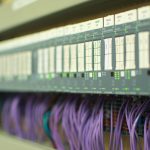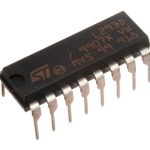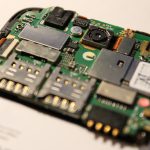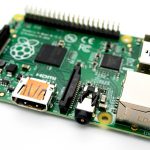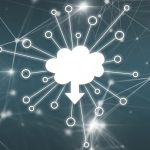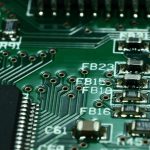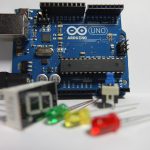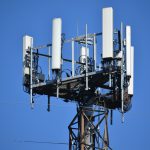
The future of Internet of Things (IoT) lies in the seamless integration of cloud computing, enabling even more intelligent and autonomous IoT systems. One crucial aspect of IoT solutions is cloud development playing a vital role in managing and processing the huge volume of data generated by IoT devices. Organisations embracing IoT solutions focusing on cloud development will be well-positioned to capitalise on the numerous opportunities and stay ahead in the era of connected devices and data-driven insights.
This article explores the significance of IoT solutions with a specific focus on cloud development.
Understanding IoT Solutions and Cloud Development
IoT solutions encompass various applications, from smart homes and wearable devices to industrial automation and smart cities. At its core, IoT solutions connect physical devices and sensors to the internet, enabling them to collect and transmit data. This data can be analysed to derive meaningful insights, enhance decision-making processes, and automate various tasks.
Cloud development is creating, testing, deploying, and managing applications and services more efficiently at a large scale. These services and applications are built for and run on cloud computing platforms. This involves utilising the resources and infrastructure provided by cloud service providers. The corresponding resources and infrastructure help develop and deliver software applications instead of relying solely on local hardware and servers.
Importance of Cloud Development in IoT Solutions
Cloud development plays a crucial role in IoT solutions in managing and leveraging IoT data. By leveraging cloud platforms, organisations can handle the immense amount of data IoT devices generate. It also allows multiple firms to store data securely and extract valuable insights through advanced analytics. Some of the several key reasons include:
Cost-Efficiency – Cloud services operate on a pay-as-you-go model, allowing organisations to scale up or down the resources when needed, resulting in cost savings. Organisations can leverage cloud providers ‘ infrastructure instead of investing in and maintaining on-premises infrastructure and paying only for the resources consumed.
Scalability and Flexibility – IoT generates enormous amounts of real-time data to store and process. Cloud platforms provide significant scalability and flexibility required to handle this data influx. The cloud’s elastic and scalable infrastructure allows seamless expansion as IoT deployments grow, ensuring that resources can adapt to changing demands.
Machine Learning and Artificial Intelligence (AI) – Cloud platforms provide the computational power and resources needed for advanced analytics, machine learning, and artificial intelligence algorithms. By leveraging cloud-based machine learning services, businesses can derive meaningful insights from IoT data, perform predictive analysis, and develop intelligent applications to enhance IoT solutions’ functionality.
Data Management and Analytics – Cloud development enables efficient data–transforming management and analytics for IoT solutions. By leveraging cloud-based databases and analytics tools, business organisations can organise, process, and store vast amounts of data generated by IoT devices. Advanced analytics algorithms can extract valuable insights from this data, enabling businesses to optimise operations, improve efficiency, and make data-driven decisions.
Connectivity and Integration – The cloud is a central hub for IoT devices, facilitating seamless connectivity and integration. This allows communication with each other, enabling real-time data exchange and remote management. Cloud development allows for standardised protocols and APIs that simplify connectivity and enable interoperability between IoT devices and platforms.
Cloud Development in IoT Solutions: Key Components
When implementing IoT solutions with a focus on cloud development, a cloud-based tool for IoT development has a vital role. Some of the several key components include:
Cloud Infrastructure: The cloud infrastructure provides the foundation for IoT solutions. It consists of servers, storage, networking, and other resources required to support the IoT ecosystem. Cloud platforms, including Amazon Web Services (AWS), Microsoft Azure, and Google Cloud Platform (GCP), offer comprehensive IoT services and infrastructure, including scalable storage, computing power, and messaging systems.
Security and Privacy:Security is a critical aspect of IoT solutions, considering the sensitive nature of the data collected. Cloud development provides robust security mechanisms to protect IoT data throughout its lifecycle. Cloud platforms offer authentication, encryption, and access control mechanisms to ensure data integrity and confidentiality. Furthermore, cloud providers adhere to industry standards and compliance regulations, providing a secure environment for IoT deployments.
Data Storage and Processing: Cloud development enables efficient storage and processing of IoT data. Cloud-based databases, such as Amazon DynamoDB or Google Cloud Bigtable, provide high scalability and low-latency access to handle large volumes of time-series data. Cloud services like AWS Lambda or Azure Functions also allow for serverless computing, enabling real-time data processing and analysis at the edge or in the cloud.
Edge Computing: Edge computing is integral to cloud development in IoT solutions. It involves processing data closer to the source, at the network’s edge, rather than sending all data to the cloud for processing. Edge computing reduces latency, improves real-time decision-making, and optimises bandwidth usage. Cloud platforms provide edge computing capabilities, enabling organisations to deploy lightweight applications and perform local data processing on IoT or gateway devices.
The Final Words
IoT solutions focusing on cloud development have transformed industries and revolutionised how we interact with technology. Cloud development enables scalable, secure, and efficient IoT solutions. It provides the necessary infrastructure, data management and processing capabilities, connectivity and integration features, and security measures for successful IoT deployments.






